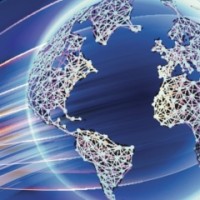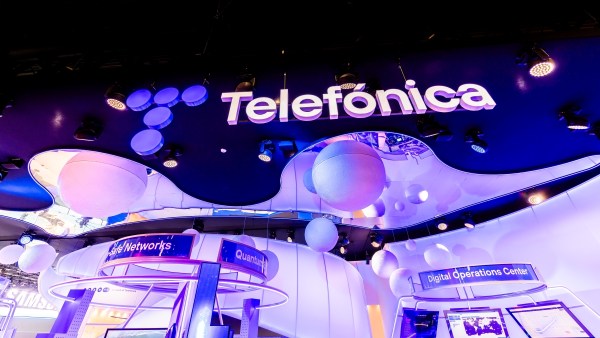David Del Val
CEO of Telefónica I+D
by David del Val
CEO , Telefonica I+D
One of the characteristics of modern innovation is its recombinant character. The term comes after the paper of the economist Martin Weitzman “Recombinant Growth” where the author describes a growth model in which new ideas arise as a recombination of existing “seed ideas”. What makes this model fascinating today is that the process of technology development has already led us to a tipping point in the number of seed technologies. And the combinatorial process of mixing these technologies is leading to an unprecedented era of innovation in the world.
Consider the example of the Internet of Things, which is likely one of the most promising areas of technology development in the near future. A number of technologies that are emerging could be used in combination, reinforcing each other and expanding its potential impact. For instance, advances in radio technology, coupled with advances in chipsets and cloud computing, are yielding a new kind of connected sensors that use so little battery that they can be deployed in places with no energy supply.
The radical change here is a technology called LPWA that can effectively enable objects to communicate for years without having to stay near a reliable source of energy. The problem today is that the battery of a sensor is unable to last for too long and needs to be replaced from time to time. But battery replacement is so expensive that being able to eliminate this process by radically reducing the energy that the sensor uses to communicate to the Internet becomes a game-changer. The practical consequence is that it becomes possible to install a connected sensor virtually everywhere, potentially driving far greater impact.
In the future, it will be possible to create completely autonomous sensors with a virtually limitless source of energy. One can imagine the benefit for those super infrastructures that are created with a long life in mind. Think of reservoirs, oil and gas pipelines, or submarine communication cables, which spread across enormous areas that have to be monitored. But the benefit also comes for applications in small spaces where access is potentially dangerous or intricate and where a sensor needs to be alive for very long periods of time. Imagine now pacemakers or other medical implants. Not to mention day to day objects that are just too hard to connect to the electrical grid, such as speed-limit signals, water pipes, or even trees. Anything that can be connected will be connected, thanks to this breakthrough that the recombination of seed technologies is bringing about.
Recombinant growth is also happening around the technologies that deal with the universe of data that’s starting to be generated. One of the most promising seed technologies is called “machine learning”. It reinvents an old technique in the area of artificial intelligence called “neural networks” whose purpose is to create autonomous knowledge without a formal model backing it up. These neural networks learn by example and after some training are able to make knowledge emerge. With limited success in the past, they are experiencing new glory times with the availability of big amounts of data for training, abundance of processing power and widespread communication networks for collection and distribution. Add new statistical tools that are able to assess the quality of the knowledge revealed and you could start an exponential growth of services based on this data.
So far, classic applications for these and other similar technologies have been used to solve problems that were formerly considered out of the reach of computers. Only one decade ago, some problems like “driving a car” or “full speech recognition” were considered only-human tasks. And thanks to the recombination of “machine learning” with other technologies they are beginning to be possible.
But more advanced use of these technologies could have an enormous impact in the life of humans. It now seems clear that soon we will be able to predict some aspects of the future of individuals using measurements of their daily life, obtained, of course, with their explicit permission. Countless start-ups are putting devices in the market that measure anything from the number of steps you take per day, to the amount of carbohydrates that you drink, to the number of times that you hit a smash when playing tennis. As more and more data is collected of what people do, how they behave, or how they feed, more knowledge can be generated about the likely or unlikely consequences of their acts.
This recombination of data collection and machine learning marks the beginning of a data-driven society. So big can the change be that some are claiming that a complete new science will be needed: what Sandy Pentland calls “Social Physics”.
Another interesting piece around this theme of the recombination of seed technologies is the blend of massively distributed databases and new mathematical techniques to create cryptocurrencies. Bitcoin is just a controversial and somehow uninteresting application of this technique, but the underlying mechanism can be used for many other purposes, as we will see in 2015 and beyond. At the heart of all cryptocurrencies there is simply a public shared database of accounts and transactions that is automatically kept synchronized by a big network of computers distributed across the globe. The beauty of this distributed architecture is that there is no need for a central clearing house, and thus transactions are recorded in a much more efficient way.
Imagine what could happen if we allow non-humans to participate in a cryptocurrency platform and we recombine this technology with the Internet of Things. Suddenly, connected objects would be able to participate in economic transactions and out of the blue an electric appliance could begin to do things like negotiating in an energy market. The ability to guarantee the validity of transactions without the need of a centralized clearing house opens a world of possibilities that we are only starting to unveil.
I would like to finish this overview of promising innovations with another example from the Telecommunication networks. Access radio networks are rapidly evolving to deal with the high requirements that traffic growth or the prospect of new concepts like tactile Internet will demand. Future wireless technologies will evolve on top on existing technologies like massive MIMO or Software Defined Radio and will complement other areas like new modulation technologies beyond today widespread OFDM.
In this sense, the “to be developed” fifth generation of mobile networks (5G) will likely be a recombination of different access network technologies. When it is fully ready, between 5 and 10 years from now, it will seamlessly integrate different access technologies into a single communications core. To do so, again, it will build on top of virtualisation technologies that are currently being developed and where, by the way, Telefónica is a global leader within the telco industry.
As inventors of the future, very few times in the past we have had so many seed technologies to recombine and create useful applications for society. Low power communications, machine learning, cryptocurrencies, and new radio accesses are just a few examples of what lies ahead. But beyond predicting what could happen in 2015, what is really exciting is that we can actually be actors and participate in the development of all these new innovations. In some way, we have the tools to build THE future that we, as a society, want.














